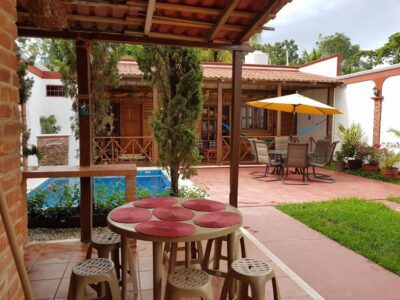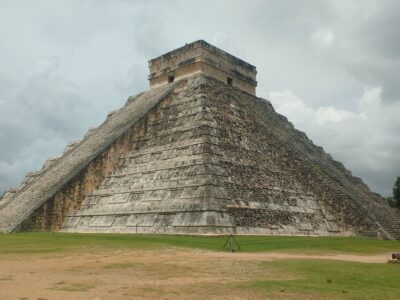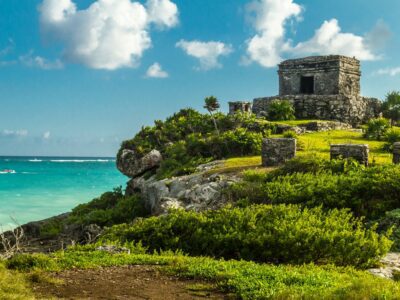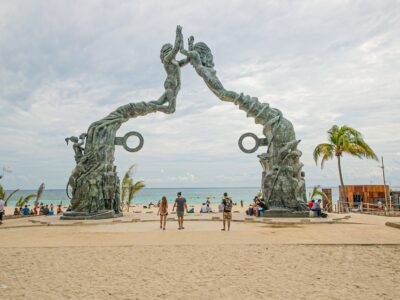Cave diver and anthropologist Sergio Grosjean Abimerhi warned that the type of karstic soil in Yucatan and the rainy and hurricane seasons generate a slow process of dissolution of soluble underground rocks that causes a collapse in areas where there are caves and cenotes.
He recommended that before any construction on Yucatan soil, specialists in soil mechanics engineering and other types of experts related to structures carry out serious and professional studies to rule out that the construction is made on top of a cenote or cave.
If the studies prove the existence of a cave or cenote, the project should be relocated, never fill or drive piles, as the engineers who built the Maya Train did in Quintana Roo, “because it will most likely have serious consequences in the future.”
Last August, a vault of a cenote in Xocén (Valladolid) collapsed and “swallowed” a huge ceiba tree that was almost 100 years old and on October 14th the cover of a rainwater collector well collapsed on the pavement of 43rd Street between 48th and 50th, in the center of the city of Tizimín, which apparently turned out to be a cenote.
Interviewed about these recent collapses in the two cities in the east of the State, Grosjean Abimerhi first explained that to understand the phenomena of Tizimín and Xocén we must be aware that caves and cenotes do not remain static over time, but quite the opposite.
It is known from its origin that it derives from a geomorphological process that scientists have called karst.
Risks due to the type of soil in Yucatan
Depending on their structure, cenotes come in differen types: open-air, with a vault, with a collapsed vault, or in caves, to name a few examples.
These wonderful natural formations have evolved over time and constantly modify their morphology through permanent processes, whether dissolution, collapse, or construction.
In this way, these static and inert cavities experience a unique modification and movement throughout time.
The specific cases of Xocén and Tizimín are the result of this process that caused the natural structures to collapse, therefore, this collapse of the land is not a sinkhole.
He said that this mechanism called collapse comes from the fluctuation in the sea level during the glacial and interglacial periods.
When the sea level dropped during the glacial periods, the aquifer dropped in the same way.
Consequently, the highest areas of the caves or cenotes, such as the vault, were left free, and due to the lack of support many of them collapsed and continued to do so up to date, as in these two cases.
“What happened in both Yucatecan towns is nothing new,” said the underwater researcher.
“We have evidence that it has occurred in many towns, such as, for example, the vault of the beautiful cenote of Zací in Valladolid collapsed in 1918.
“The story goes that one morning that year a thunderous noise woke the population and they, without knowing what was happening, continued their peaceful sleep. The next day, at dawn, the residents were greatly surprised to see that the cenote no longer had the same appearance, and they understood what had caused the loud noise of the night: the collapse of the vault, which when it came into contact with the water caused a thunderous roar.”
Cenotes in Yucatan, damaged by human activity
Sergio Grosjean, with more than 20 years of diving in cenotes and exploring caves, pointed out that the Yucatecans know that the great majority of the populations of Yucatan were developed near some source of water supply such as cenotes.
When the population grew, the inhabitants looked for new sources of water supply and used the cenotes and caves during their foundation.
That is, they stopped using the cenote in the center of the town due to its high water contamination and closed it.
“We have the case of Izamal, where documentary sources tell us about a cenote that was located in the center, or in Tecoh, to cite a few examples,” he explained.
“There are other cases such as that of Huhí, where there is a cenote in the center of town that is completely silted up because it has been used as a receiver of rainwater,” he explained.
“The rainwater carries sediment and has caused the cenote to dry out since the mud covered the veins that feed this source of water from the water table.”
The cave diver was asked about the preventive measures that should be applied to avoid tragedies in ground subsidence. Fortunately, in the Xocén and Tizimín landslides, there were no human victims or property damage.
“There are measures that must be taken before an accident occurs. For example, beneath the convent of San Bernardino de Siena, on a side street and inside a private property, there is a sinkhole 50 meters in diameter.”
“Part of the vault could collapse due to the constant vibration produced by the vehicles that travel on the street,” he warned.
“To this risk, we should add the illegal work that was done inside the cenote by a private individual,” he said.
“The situation is the following: from the vault of the cenote hangs an enormous structure that was made to make a bridge for tourists, which in times of drought hangs from the vault and in times of rain presses it upwards.”
“The heavy bridge is supported by the vault of the cenote and barrels hang from it that make it float. The variations in the water level can affect the natural structure due to the pressure of the weight and it can collapse with people crossing the hanging bridge.”
What impact do human activities have on these sinkholes?
“Human activities can speed up the collapse of a vault, that is, building on a vault is adding weight to a formation that, by its natural process, weakens over time,” he replied.
“It is important to carry out engineering studies when building a house and realizing the existence of a cenote or cave, and in particular, to analyze with specialists if it is a cenote that has endemic species that must be protected,” Sergio Grosjean concluded.
TYT Newsroom
The post Cases of collapse in cenote vaults could be repeated in other locations in Yucatan first appeared on The Yucatan Times.














